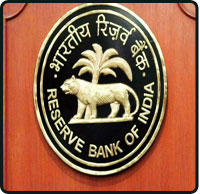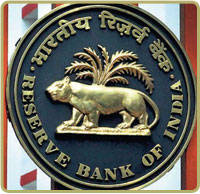Introduction
The Reserve Bank of India is the organization which is India's Central Banking Establishment. It controls all the Monetary Policy of the Indian currency, Rupee. It was established on 1st of April month in the year 1935 during the British Rule in agreement with the requirements of the Reserve Bank of India Act, 1934. The original stake capital was separated into stakes of 100 each entirely paid, which were originally owned completely by private stakeholders. After India's independence on 15th of August in the year 1947, the RBI was nationalized in the year 1949.The Reserve Bank of India plays an essential part in the Improvement Approach of the Government of India. It is an affiliated bank of the Asian Clearing Union. The general superintendence and direction of the Reserve Bank of India is trusted with the 20 member Central Board of Directors which includes the Governor, 4 Deputy Governors, 1 Finance Ministry representatives, 10 government nominated directors to symbolize important elements of the Indian economy.
 4 directors to symbolize the respective local boards which are headquartered at Chennai, Mumbai, Kolkata and New Delhi. All of these local boards comprises of 5 members who exemplify regional interests and the goods of cooperative and native banks.The Reserve Bank of India is also highly active in endorsing financial inclusion policy and is a top member of the Alliance for Financial Inclusion which is shortly referred to as AFI.
4 directors to symbolize the respective local boards which are headquartered at Chennai, Mumbai, Kolkata and New Delhi. All of these local boards comprises of 5 members who exemplify regional interests and the goods of cooperative and native banks.The Reserve Bank of India is also highly active in endorsing financial inclusion policy and is a top member of the Alliance for Financial Inclusion which is shortly referred to as AFI.
Functions of the RBI The Reserve Bank of India is the ultimate Monetary Authority which frames, implements and monitors the monetary policies. Its main objective is to maintain price steadiness and to ensure acceptable flow of credit to the productive sectors. As a Regulator and a supervisor of the financial system of India it proposes broad parameters of banking procedures within which the country's banking and financial system operates. It maintains public confidence in the system, protects depositors' interest and provides cost effective banking services to the public.
It is the Manager of Foreign Exchange that controls the Foreign Exchange Management Act of the year 1999. It focuses for smooth external trade and payment and endorse methodical development and maintenance of the foreign exchange market in India. It is the Issuer of currency which issues and exchanges or terminates currency and coins that might not fit for circulation. It functions to give the public satisfactory quantity of deliveries of currency notes and coins and should be in good quality.
It plays a highly developmental role by performing a extensive variety of promotional functions to upkeep national objectives. It performs commercial banking function for the central and the state governments and also acts as their cashier. It further maintains finance accounts of all the planned banks.
The Reserve Bank of India does this function under the supervision of the Board for Financial Supervision. The Board was established in the month of November in the year 1994 as a commission of the Central Board of Directors of the RBI. Its primary objective is to accept joined regulation of the financial sector containing commercial banks, financial institutions and non-banking finance corporations.
 This Board is established by the co-opting 4 Directors from the Central Board as associates for a period of two years and is led by the Governor. The Deputy Governors of the RBI are ex official members. 1 Deputy Governor, generally, the Deputy Governor in charge of banking guideline and supervision, is designated as the Vice Chairman of the Board. The Board is mandatory to meet usually on one occasion every month. It reflects inspection reports and other guiding issues placed before it by the guiding departments. BFS through the Audit Sub-Committee aims at improving the quality of the legal audit and inner audit functions in banks and various financial institutions.
This Board is established by the co-opting 4 Directors from the Central Board as associates for a period of two years and is led by the Governor. The Deputy Governors of the RBI are ex official members. 1 Deputy Governor, generally, the Deputy Governor in charge of banking guideline and supervision, is designated as the Vice Chairman of the Board. The Board is mandatory to meet usually on one occasion every month. It reflects inspection reports and other guiding issues placed before it by the guiding departments. BFS through the Audit Sub-Committee aims at improving the quality of the legal audit and inner audit functions in banks and various financial institutions.The audit sub-committee comprises of Deputy Governor as the chairman and 2 Directors of the Central Board as its members. The BFS supervises the working of the Department of Banking Supervision (shortly called as DBS), Department of Non-Banking Supervision (shortly called as DNBS) and Financial Institutions Division (shortly called as FID) and gives guidelines on the governing and supervisory concerns.
Some of the initiatives taken by the Board for Financial Supervision include reforming of the system of bank checks, introduction of offsite observation, reinforcing the role of statutory accountants and reinforcing the internal defenses of overseen organizations.
 The Audit Sub-committee of BFS has studied the existing system of simultaneous audit, standards of empanelment and choice of statutory accountants, the excellence and analysis of statutory inspection reports and the significant issue of better transparency and revelation in the available accounts of overseen organizations.
The Audit Sub-committee of BFS has studied the existing system of simultaneous audit, standards of empanelment and choice of statutory accountants, the excellence and analysis of statutory inspection reports and the significant issue of better transparency and revelation in the available accounts of overseen organizations. Currently the BFS focuses on supervising of financial organizations, consolidation of accounting, facing legal issues in bank scams, deviation in valuations of nonperforming assets and supervising of rating model for the banks in the country.
Contact details:



